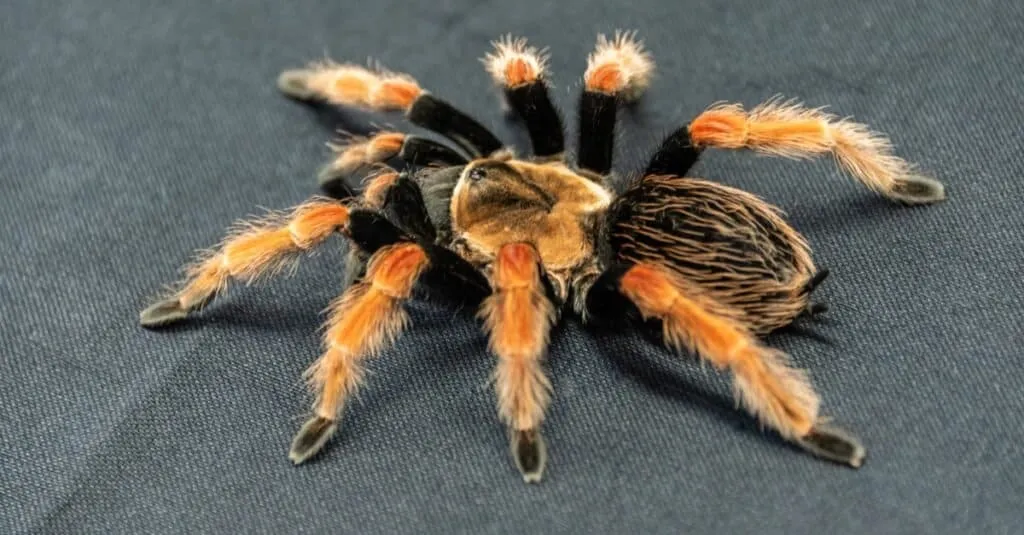Understanding the Red Knee Tarantula’s Diet
The Red Knee Tarantula (Brachypelma hamorii), a beloved pet for many, has specific dietary needs that are crucial for its health and longevity. Providing the right nutrition is key to ensuring your tarantula thrives in captivity. Understanding what they eat naturally and what’s appropriate for their captive environment is the first step in responsible tarantula ownership. This guide will break down the essential aspects of feeding your Red Knee Tarantula, ensuring you can provide the best possible care.
What Do Red Knee Tarantulas Eat in the Wild
In their natural habitat, the wild Red Knee Tarantulas are opportunistic predators. They primarily feed on whatever insects they can catch. Their diet is dictated by availability and the environment. They are ambush predators, waiting patiently for their prey to come within striking distance. Understanding their natural diet is crucial for replicating a healthy feeding regime in captivity.
Common Prey Items
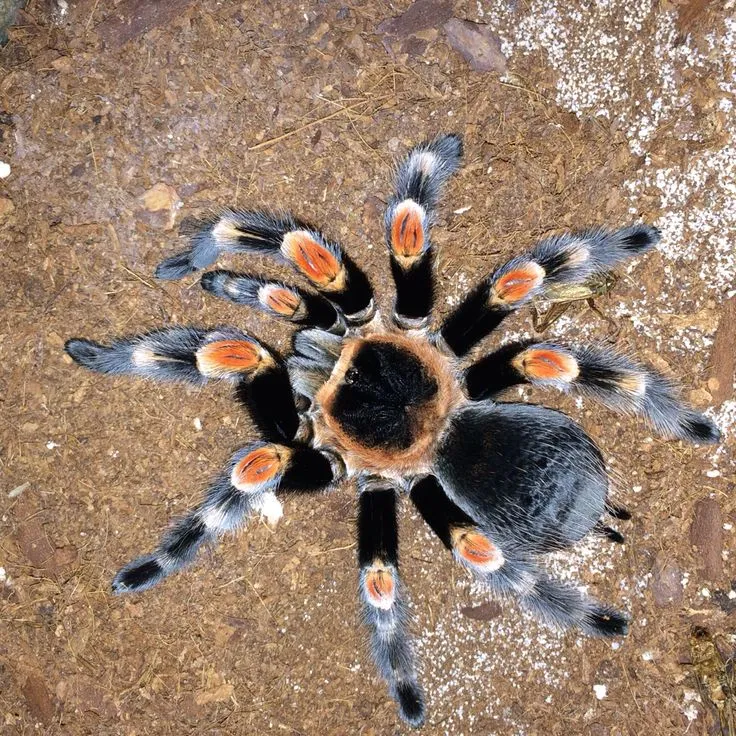
Wild Red Knee Tarantulas typically consume a variety of insects, including grasshoppers, crickets, beetles, and occasionally small lizards or other small vertebrates. These spiders are not picky eaters, but the size of the prey is essential; it must be appropriate for the size of the tarantula. A balanced diet in the wild ensures they receive a wide range of nutrients necessary for survival and growth.
Factors Influencing Diet in the Wild
Several factors influence the diet of Red Knee Tarantulas in the wild. These include the season, the local insect population, and the availability of shelter. During the rainy season, food may be more abundant, while during dry periods, food sources can become scarce, affecting their feeding frequency. These factors demonstrate the adaptability of these spiders.
Best Foods for Your Red Knee Tarantula
Replicating the natural diet as closely as possible is important for your Red Knee Tarantula’s health. In captivity, this means providing a diet of live insects. It’s vital to offer a varied diet to ensure that the tarantula receives all the necessary nutrients. The size of the insect offered should be appropriate for the size of the tarantula to prevent injury or stress.
Live Insects
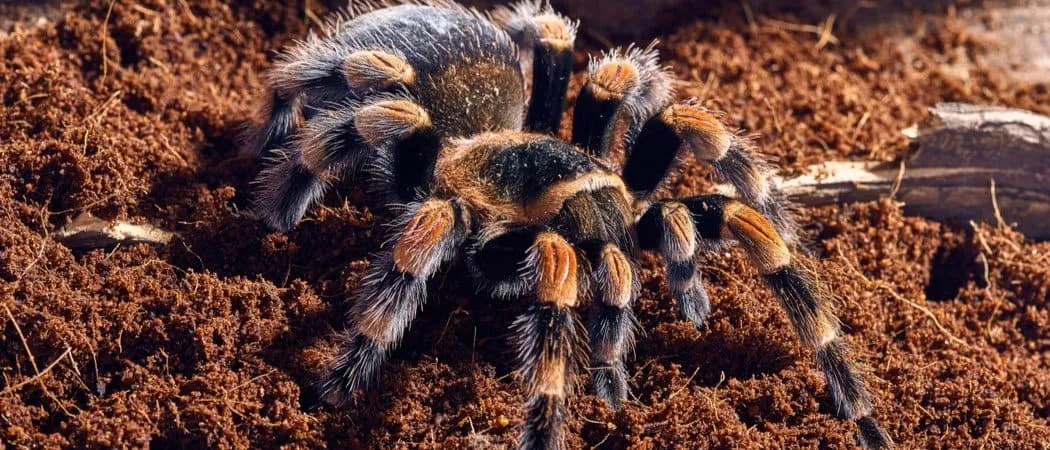
Live insects are the cornerstone of a healthy Red Knee Tarantula diet. These provide the necessary protein and other nutrients. Ensure that the insects are gut-loaded before feeding them to your tarantula. Gut-loading involves feeding the insects a nutritious diet for at least 24 hours before they are offered to the tarantula. This practice enriches the insects with vitamins and minerals, which the tarantula will then ingest.
Crickets as a Staple
Crickets are a common and readily available food source for Red Knee Tarantulas. They are easy to breed, making them a convenient option for regular feeding. When selecting crickets, ensure they are of the appropriate size, generally no larger than the tarantula’s abdomen. Crickets should be gut-loaded with a commercial cricket diet or fresh vegetables like carrots and potatoes.
Roaches as an Alternative
Roaches, particularly Dubia roaches, are an excellent alternative food source. They are higher in protein and more nutritious than crickets and are relatively slow-moving, making them easy for the tarantula to catch. Roaches can also be gut-loaded. They are a good option, as they do not have the same tendency to die easily, making them a cleaner option for the enclosure.
Other Insects
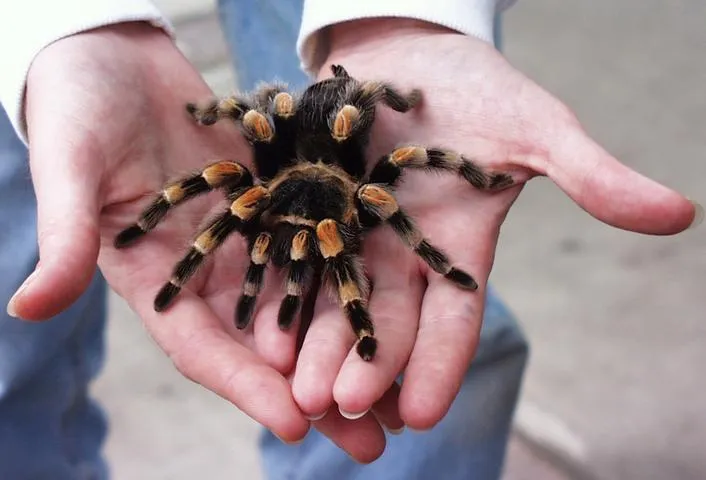
Besides crickets and roaches, other insects can be offered to provide dietary variety. The key is to ensure the insects are pesticide-free and of a size appropriate for the tarantula. Variety in diet is crucial for providing a broader range of nutrients, and supplementing the diet can contribute to the overall health and well-being of your tarantula.
Mealworms
Mealworms can be offered occasionally but are not as nutritionally complete as crickets or roaches. They have a higher chitin content, making them harder to digest. Offer them as a treat rather than a staple food. Ensure that the mealworms are of good quality and are not too large for the tarantula to handle easily. Overfeeding mealworms can lead to digestion problems.
Superworms
Superworms, or Zophobas morio, are another option, similar to mealworms. Like mealworms, they are high in fat and should be offered in moderation. Always monitor your tarantula’s condition and adjust the diet accordingly. If the tarantula is becoming too plump, reduce the frequency of feeding superworms or other high-fat insects.
Feeding Guidelines for Red Knee Tarantulas
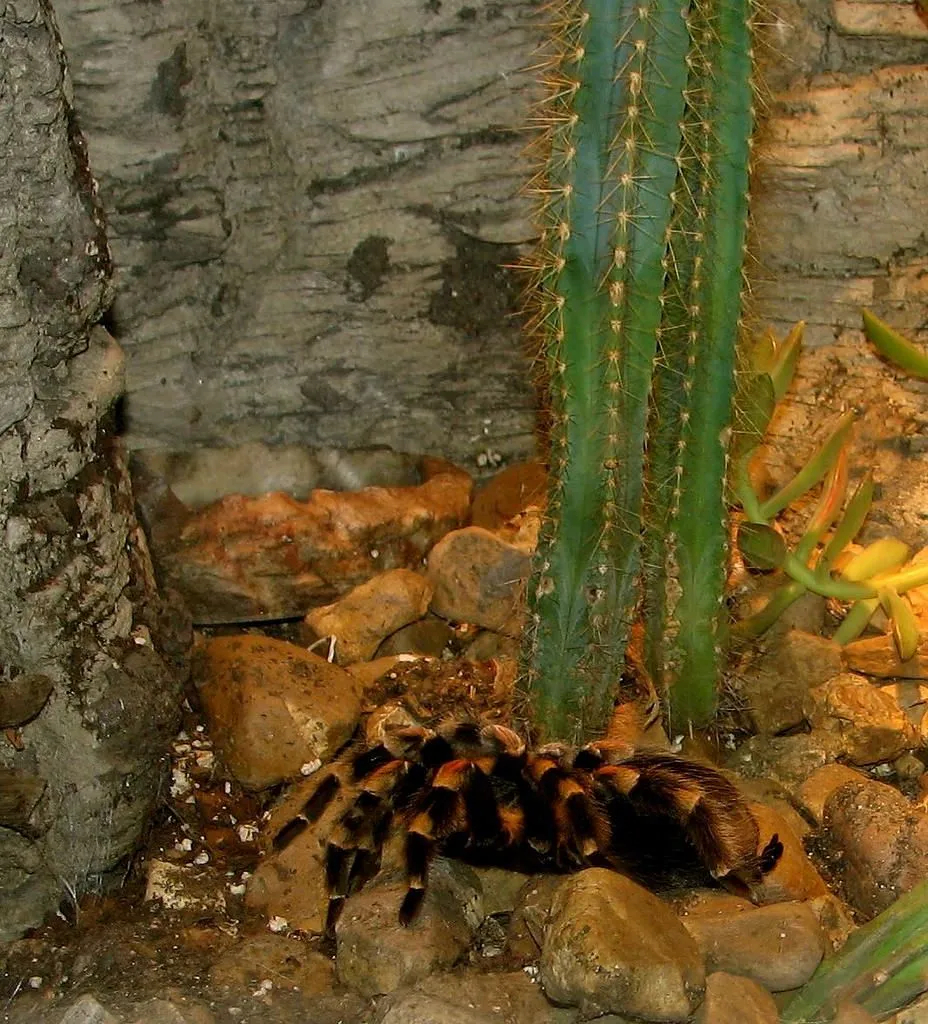
Establishing a proper feeding schedule and understanding the needs of your Red Knee Tarantula is essential for its health. The frequency of feeding and the amount of food offered can vary. The tarantula’s age, size, and overall health affect these aspects. Always observe your tarantula’s behavior and adjust the feeding accordingly. It’s best to establish a routine, but flexibility is key.
Feeding Frequency Based on Age
Younger tarantulas, or spiderlings, need to be fed more frequently than adults. Spiderlings should be fed two to three times a week. As the tarantula matures, the feeding frequency can be reduced. Sub-adults and adults typically need to be fed once every one to two weeks. The size of the prey offered should also be adjusted based on the tarantula’s size and stage of growth.
Water and Hydration
Providing fresh water is critical to a Red Knee Tarantula’s health. They need access to clean water at all times. A shallow water dish is essential; it should be small enough to prevent drowning and accessible to the tarantula. Regularly check and refill the water dish. The water helps in molting and overall well-being. The humidity level should be monitored and maintained appropriately.
Avoiding Overfeeding
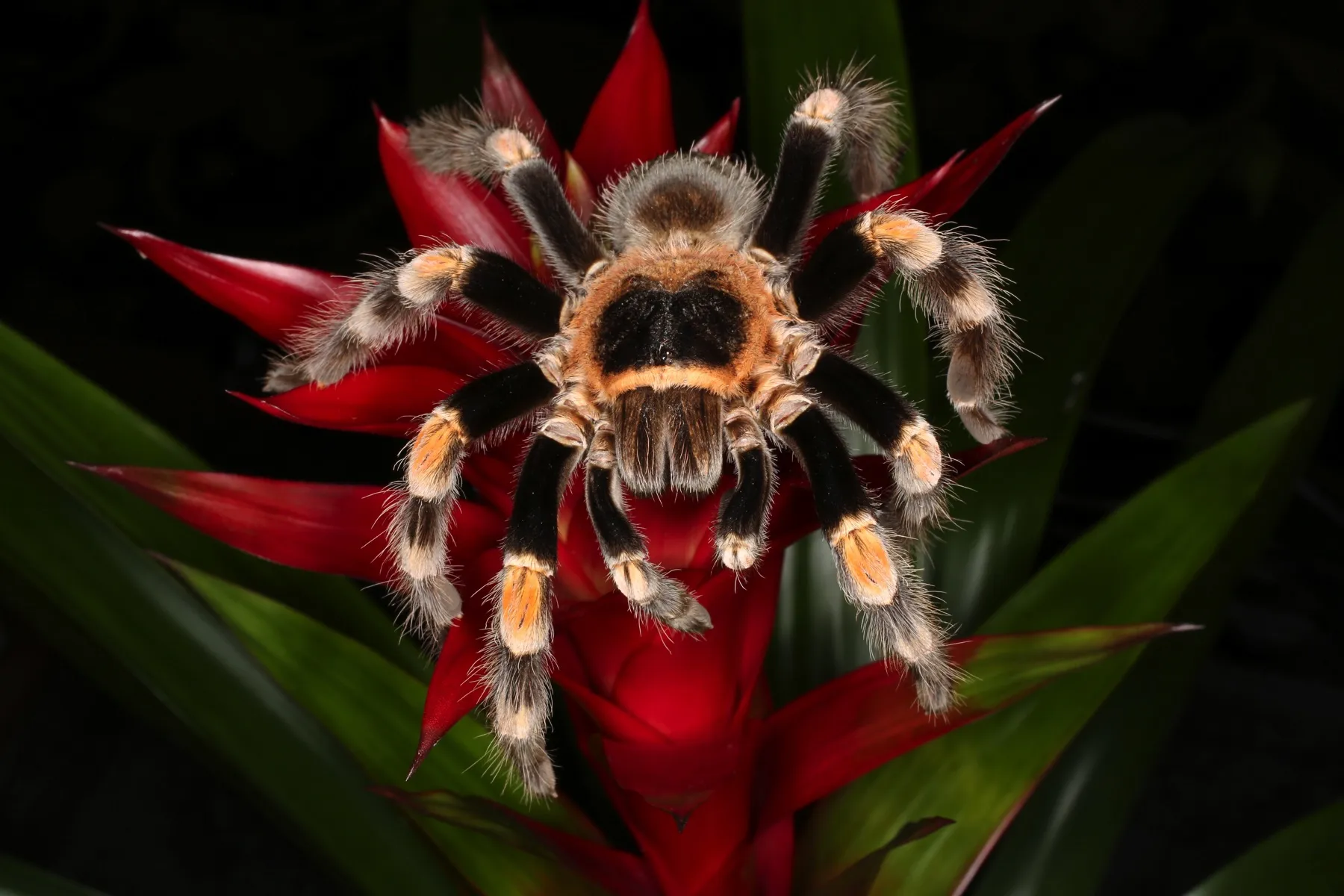
Overfeeding can be detrimental to a Red Knee Tarantula’s health. If a tarantula is not eating the prey offered, remove it from the enclosure after 24 hours. A tarantula that is consistently refusing food may be approaching a molt or experiencing other health issues. Overfeeding can cause obesity, which can shorten its lifespan. Regularly monitor the tarantula’s abdomen size; it should not appear overly distended.
Nutritional Considerations
Beyond the type of insects, the nutritional value of the food is crucial. A balanced diet ensures the tarantula receives all the necessary vitamins, minerals, and other nutrients. A well-nourished tarantula will exhibit vibrant colors and increased activity levels, all signs of a healthy pet. The nutritional value of the food directly impacts the tarantula’s overall health and development.
Importance of a Varied Diet
Offering a varied diet is vital for a Red Knee Tarantula. This provides a broader range of nutrients. Different insects contain different nutrients. Regularly switching up the food sources ensures the tarantula receives a full spectrum of essential elements. A varied diet promotes better overall health, growth, and longevity.
Supplements and Vitamins
While a varied diet of gut-loaded insects often provides enough nutrients, some keepers choose to use supplements. Calcium and vitamin supplements can be beneficial, especially during molting. These supplements are usually applied to the insects before feeding. Use supplements sparingly, as over-supplementation can lead to health issues. Consult with a veterinarian specializing in exotic pets for personalized advice.
Troubleshooting Feeding Issues
Even with the best care, tarantulas can sometimes experience feeding issues. Being able to identify and address these problems is key. Understanding the reasons behind changes in appetite can help you provide better care. The health and environment significantly influence feeding behavior. Always be attentive to your pet’s behavior.
Refusal to Eat
If your Red Knee Tarantula refuses to eat, there may be several reasons. The most common cause is that the tarantula is preparing to molt. During this process, they often lose their appetite. Other causes may include stress, improper temperature, or illness. Check the enclosure conditions and ensure they are optimal. If the refusal continues for an extended period, consult with a veterinarian.
Molting and Appetite
Molting significantly impacts a tarantula’s appetite. Before molting, they will often stop eating. After the molt, they may be hesitant to eat for a few days. Avoid feeding them immediately after molting. Wait until the exoskeleton has hardened. Provide a safe and undisturbed environment during this vulnerable time. Ensure proper humidity is maintained.
Maintaining a Healthy Habitat
A healthy habitat is fundamental to the Red Knee Tarantula’s well-being and, therefore, their appetite. The enclosure conditions directly affect the tarantula’s health and feeding habits. Regularly maintaining the enclosure is important to create a healthy environment. Proper temperature, humidity, and cleanliness help maintain the tarantula’s appetite and overall health.
In conclusion, understanding what to feed a Red Knee Tarantula is crucial to their care. By providing a varied diet of live, gut-loaded insects, maintaining a proper feeding schedule, and ensuring a healthy habitat, you can help your pet thrive. Careful observation and attention to detail are essential for ensuring your tarantula lives a long and healthy life.
